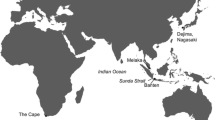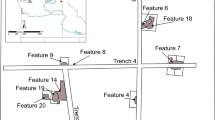Earth Ovens ( Píib ) in the Maya Lowlands: Ethnobotanical Data Supporting Early Use. Earth oven cooking is very important among the Yucatec Maya. It is used for daily, festive, and ceremonial occasions, contrasting with other Mesoamerican cultures that use this technique sporadically. In this paper we present an ethnobotanical analysis of the use of earth ovens in a Maya community in Yucatan, Mexico, and discuss its possible antiquity, probable reasons for its continuity, and its current and past importance. We found four oven types in daily use as well as in ritual and celebratory contexts. These involve both men and women in a way that favors transmission of traditional knowledge to the next generation and promotes social bonding and ethnic identity. Of the 46 plant species used in their construction or for the dishes cooked in them, 82% are native and produced in traditional agricultural systems: milpa (kool in Maya) maize-bean-squash association and conuco (pach pakal in Maya) based on tubers such as manioc (Manihot esculenta Crantz). Research suggests that this food preparation technology has the same antiquity as its associated agricultural systems (approximately 3400 to 3000 B.C.E.). Earth ovens were probably used to cook roots and meat in the Archaic and then to cook tamales (vegetal-wrapped maize dough) beginning in the Preclassic. Continuity of traditional agricultural and cultural practices has favored preservation of earth ovens.
El horno bajo tierra ( píib ) en las tierras bajas mayas: El análisis etnobotánico apoya su uso temprano. La preparación de alimentos en horno bajo tierra es muy importante entre los mayas yucatecos. Se usa de manera cotidiana, para ocasiones festivas y para ceremonias, contrastando con lo que ocurre en las otras culturas mesoamericanas, quienes usan esta técnica de manera esporádica. En este artículo, presentamos un análisis etnobotánico de los hornos bajo tierra en una comunidad maya en Yucatán, México, y discutimos su posible antigüedad y las posibles razones de su continuidad e importancia actual y pasada. Encontramos cuatro tipos de hornos, tanto de uso diario, como en contextos festivo y ritual. En su construcción y uso participan hombres y mujeres de una manera que favorece la transmisión de los conocimientos tradicionales a la siguiente generación, promueve la vinculación social y la identidad étnica. De las 46 especies de plantas utilizadas en su construcción y en la preparación de los platillos cocinados en ellos, 82% son nativos y se producen en los sistemas agrícolas tradicionales milpa (kool en maya) asociación maíz-frijol-calabaza y conuco (pach pakal en maya) asociación basada en tubérculos como yuca (Manihot esculenta Crantz). La investigación sugiere que esta tecnología de preparación de alimentos tiene la misma antigüedad que dichos sistemas agrícolas (aproximadamente 3400 a 3000 a. C.). Los hornos de tierra probablemente fueron usados para cocinar carne y raíces en el Arcaico y en el Preclásico comenzaron a usarse para cocer tamales (alimento a base de masa de maíz envuelta en hojas vegetales). La continuidad de la agricultura tradicional y de las prácticas culturales ha favorecido la permanencia del horno bajo tierra.




Similar content being viewed by others
Literature Cited
Anderson, E. N. 2010. Food and feasting in the zona Maya of Quintana Roo. Pages 441–466 in J. E. Staller and M. D. Carrasco, eds., Precolumbian foodways: Interdisciplinary approaches to food, culture and markets in ancient Mesoamerica. Springer-Verlag, New York.
Barba, L. A. and L. Manzanilla. 1987. Estudio de áreas de actividad. Pages 69–115 in L. Manzanilla, ed., Cobá, Quintana Roo: Análisis de dos unidades habitacionales Mayas. Universidad Nacional Autónoma de México, México.
Cheetham, D. 2010. Corn, colanders and cooking: Early maize processing in the Maya lowlands and its implications. Pages 345–368 in J. E. Staller and M. D. Carrasco, eds., Precolumbian foodways: Interdisciplinary approaches to food, culture and markets in ancient Mesoamerica. Springer-Verlag, New York.
Colunga-García Marín, P. and F. May-Pat. 1993. Agave studies in Yucatán, México. I. Past and present germplasm diversity and uses. Economic Botany 47(3):312–327.
De Landa, D. 1986 [1574]. Relación de las cosas de Yucatán. Mérida, Yucatán: Ediciones Dante, Colección Sureste.
De Pierrebourg, F. 2007. Espacios y áreas de actividad en la Plataforma del Cabrío, Kabah. In: XX Simposio de investigaciones arqueológicas en Guatemala, eds. J. P. Laporte, B. Arroyo, and H. Mejía, 214–235. Museo Nacional de Arqueología y Etnología, Guatemala. http://asociaciontikal.com/pdf/16_-_Fabienne.06_-_xxx.pdf.
———, L. Barba, and C. Trejo. 2000. Etnoarqueología y análisis químicos en una unidad habitacional tradicional en Muxucucab, Yucatán. Anales de Antropología 34:105–131.
deFrance, S. and C. A. Hanson. 2008. Labor, population movement and food in sixteenth century Ek Balam, Yucatan. Latin American Antiquity 19:299–316.
Dering, P. 1999. Earth-oven plant processing in Archaic period economies: An example from a semi-arid savannah in South-Central North America. American Antiquity 64:659–674.
DETENAL (Dirección de Estadística del Territorio Nacional.). 1974. Modificaciones al sistema de clasificación de suelos FAO/UNESCO. Secretaría de programación y resupuesto, México, D.F.
Espejo-Serna, A. and A. Rosa López-Ferrari. 2003. Alliaceae. Flora de Veracruz. Instituto de Ecología A.C. Xalapa, Veracruz; University of California, Riverside, California
Fish, S. K., P. R. Fish, C. Miksicek, and J. Madsen. 1985. Prehistoric Agave cultivation in southern Arizona. Desert Plants 7(107–112):100.
Flores, J. S. and J. Kantún Balam. 1997. Importance of plants in the Cha’ chaak Maya ritual on the Peninsula of Yucatan. Journal of Ethnobiology 17:97–108.
García, E. 1964. Modificaciones al sistema de clasificación climática de Köppen. UNAM, México, D.F.
García-Quintanilla, A. 2000. El dilema de Ah Kimsah K’ax, “El que mata al monte”: Significados del monte entre los mayas milperos de Yucatán. Mesoamérica 39:255–285.
Götz, C. 2008. Coastal and inland patterns of faunal exploitation in the prehispanic northern Maya lowlands. Quaternary International 191:154–169.
——— 2011. Una mirada zooarqueológica a los modos alimenticios de los mayas de las tierras bajas del norte. Pages 96–119 in H. A. Hernández Álvarez and M. Pool, eds., Identidades y cultura material en la región maya. UADY, C. Mérida, Yucatán.
Hamblin, N. L. 1984. Animal use by the Cozumel Maya. The University of Arizona Press, Tucson.
Harrison, P. D. 2006. La agricultura maya. Pages 70–79 in Los mayas una civilización milenaria, N. Grube. Könemann, Hagen, Denmark.
Houston, S. D. 1996. Symbolic sweatbaths of the Maya: Architectural meaning in the cross group at Palenque, Mexico. Latin American Antiquity 7(2):132–151.
——— and K. Taube. 1989. Folk classification of classic Maya pottery. American Anthropologist 91:720–726.
Hull, K. 2010. An epigraphic analysis of Classic-period Maya foodstuffs. Pages 235–256 in J. E. Staller and M. D. Carrasco, eds., Precolumbian foodways: Interdisciplinary approaches to food, culture and markets in ancient Mesoamerica. Springer-Verlag, New York.
INEGI. 2005. http://cat.microrregiones.gob.mx/cedulas/localidadesDin/ubicacion/general.asp?micro=02 ORIENTE&clave = 311020174&nomloc = XOCEN.
Leach, J. D. and K. D. Sobolik. 2010. High dietary intake of prebiotic inulin-type fructans in the prehistoric Chihuahuan Desert. British Journal of Nutrition 103:1558–1561.
Luna-Reyes, I. 1994. Alimentación y consumo en una comunidad maya de Yucatán: Xocén. Ph.D. thesis, Universidad Autónoma de Yucatán, Mérida, Yucatán.
Manzanilla, L. and L. Barba. 1990. The study of activities in Classic households: Two case studies from Cobá and Teotihuacán. Ancient Mesoamerica 1:41–49.
Marcus, J. 2004. Ancient Maya commoners: Stereotype and reality. Pages 255–283 in J. C. Lohse and F. Valdez, eds., Ancient Maya commoners. University of Texas Press, Austin.
Mediz-Bolio, A., ed. 2005 [1782]. Libro de Chilam Balam de Chumayel. Colección Sureste. Mérida, Yucatán: Dante.
O’Connor, A. 2010. Maya foodways: A reflection of gender and ideology. Pages 487–510 in J. E. Staller and M. D. Carrasco, eds., Precolumbian foodways: Interdisciplinary approaches to food, culture and markets in ancient Mesoamerica. Springer-Verlag, New York.
Piperno, D. R. and D. M. Pearsall. 1998. The origin of agriculture in the Lowland Neotropics. Academic Press, San Diego, California.
Pohl, M. D., K. O. Pope, J. G. Jones, J. S. Jacob, D. R. Piperno, S. deFrance, D. L. Lenz, J. A. Gifford, F. Valdez, M. E. Danfoth, and J. K. Josserand. 1996. Early agriculture in the Maya Lowlands. Latin American Antiquity 7:355–372.
Quiroz, J., C. Cantú Díaz R., and R. Orellana 2009. Uso de la leña en Yucatán y tecnología para su aprovechamiento sustentable. CICY. Mérida, Yucatán: Red Verde.
Redfield, R. and A. Villa Rojas. 1962 [1941]. Chan kom: A Maya village. Chicago, Illinois: University of Chicago Press.
Sánchez González, M. C. 1993. Uso y manejo de la leña en Xuilub, Yucatán. Etnoflora Yucatanense. Fascículo 8. UADY. Sostenibilidad maya. Mérida, Yucatán.
Suhler, C., D. A. Freidel, and T. Arden. 1998. Northern Maya architecture, ritual and cosmology. Anatomía de una civilización. Aproximaciones interdisciplinarias a la cultura Maya. Sociedad Española de Estudios Mayas 4:253–273.
Taube, K. 1989. The maize tamale in classic Maya diet, epigraphy and art. American Antiquity 54:31–51.
Terán, S., C. Rassmussen, and O. Pat. 1994. Las plantas de la milpa de los mayas. Danida, Mérida, Yucatán.
——— and ———. 2005. Xocén el pueblo en el centro del Mundo. UADY, Mérida, Yucatán.
Terán,S. and C. Rassmussen. 2010. La milpa de los mayas. UNAM. UNO, México D.F.
Thompson, J. E. 1938. Sixteen and seventeen century reports on the Chol Mayas. American Anthropologist 40:584–604.
Thoms, A. V. 2009. Rock of ages: Propagation of hot-rock cookery in Western North America. Journal of Archaeological Science 36:573–591.
Van den Bel, M. 2010. A description of late archaic rock-filled pits in French Guiana. Revista de Arqueología 23:60–71.
Vázquez-Dzul, G. 2009. El píib maya ¿Procedimiento de cocina ritual o espejo étnico actual? Arqueología Mexicana 99:78–83.
Wandsnider, L. 1997. The roasted and the boiled: Food composition and heat treatment with special emphasis on pit-hearth cooking. Journal of Anthropological Archaeology 16:1–48.
Wells, E. C., C. Novotny, and J. R. Hawken. 2007. Quantitative modeling of soil chemical optical emission spectroscopy reveals evidence for cooking and eating in ancient Mesoamerican Plazas. Pages 210–230 in M. D. Glascock, R. J. Speakman, and R. S. Popelka-Filcoff, eds., Archaeological chemistry: Analytical techniques and archaeological interpretation. Archaeological Chemical Society, Washington, D.C.
White, C. D., ed. 1999. Reconstructing ancient Maya diet. University of Utah Press, Salt Lake City.
Zizumbo-Villarreal, D. and P. Simá. 1988. Prácticas de roza-tumba-quema en la agricultura maya-yucateca y su papel en la regeneración de la selva. Pages 84–104 in R. Uribe, ed., Medio ambiente y comunidades indígenas del sureste. Gobierno de Tabasco, UNESCO, Villahermosa, Tabasco.
Acknowledgments
Partial financial support was received from the Red Latinoamericana de Botánica and the Andrew Mellon Foundation through a field work grant and by the Programa del Mejoramiento del Profesorado PROMEP /103.5/09/4348 through a graduate studies scholarship, all awarded to Carmen Salazar. The authors thank Silvia Terán, Paulina Machuca, and the anonymous reviewers of this article for their comments, Teresa Pulido for administrative assistance, and the families of Xocén, especially Maura Dzib Canul, for their hospitality.
Author information
Authors and Affiliations
Corresponding author
Rights and permissions
About this article
Cite this article
Salazar, C., Zizumbo-Villarreal, D., Brush, S.B. et al. Earth Ovens (Píib) in the Maya Lowlands: Ethnobotanical Data Supporting Early Use. Econ Bot 66, 285–297 (2012). https://doi.org/10.1007/s12231-012-9207-2
Received:
Accepted:
Published:
Issue Date:
DOI: https://doi.org/10.1007/s12231-012-9207-2




